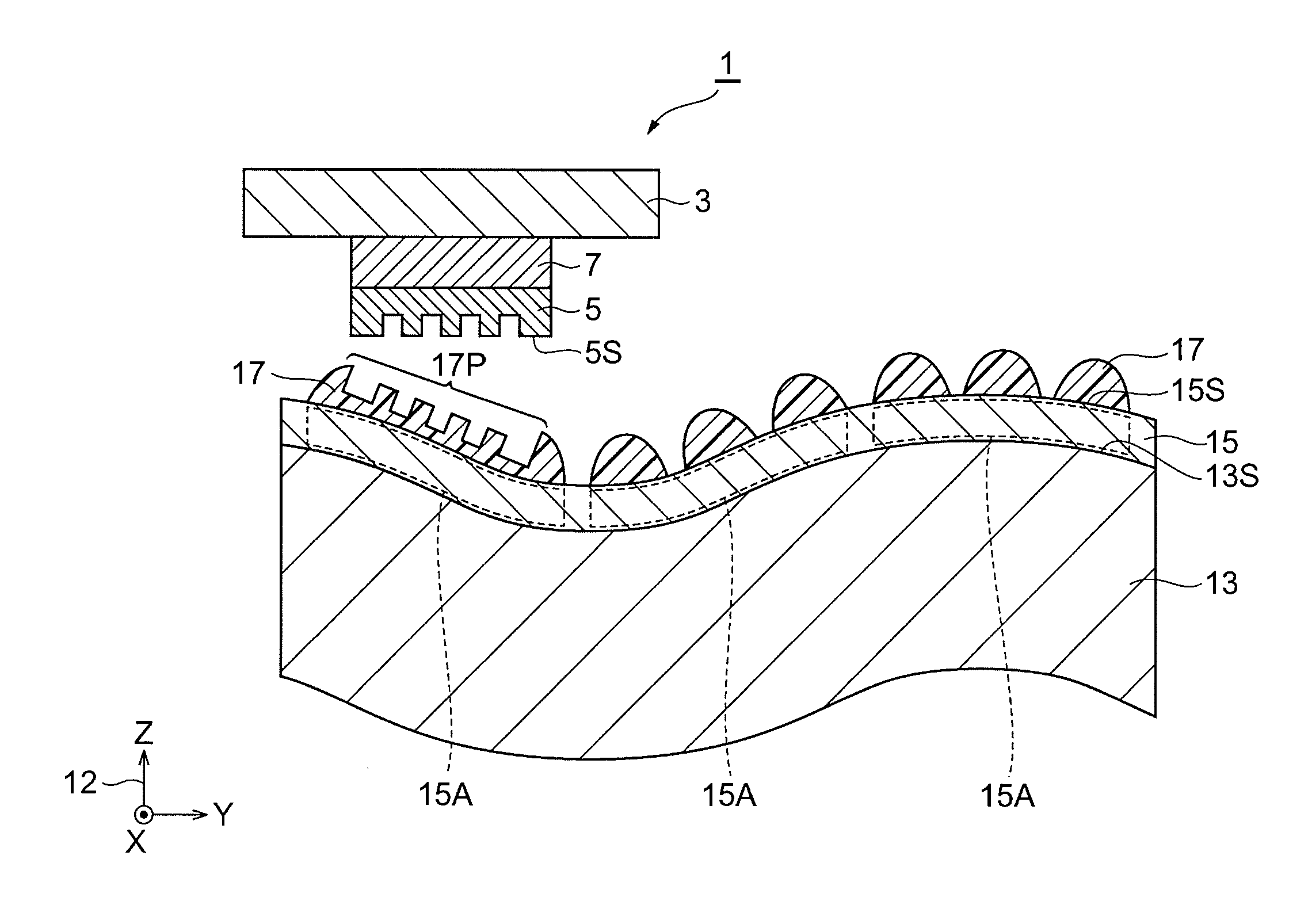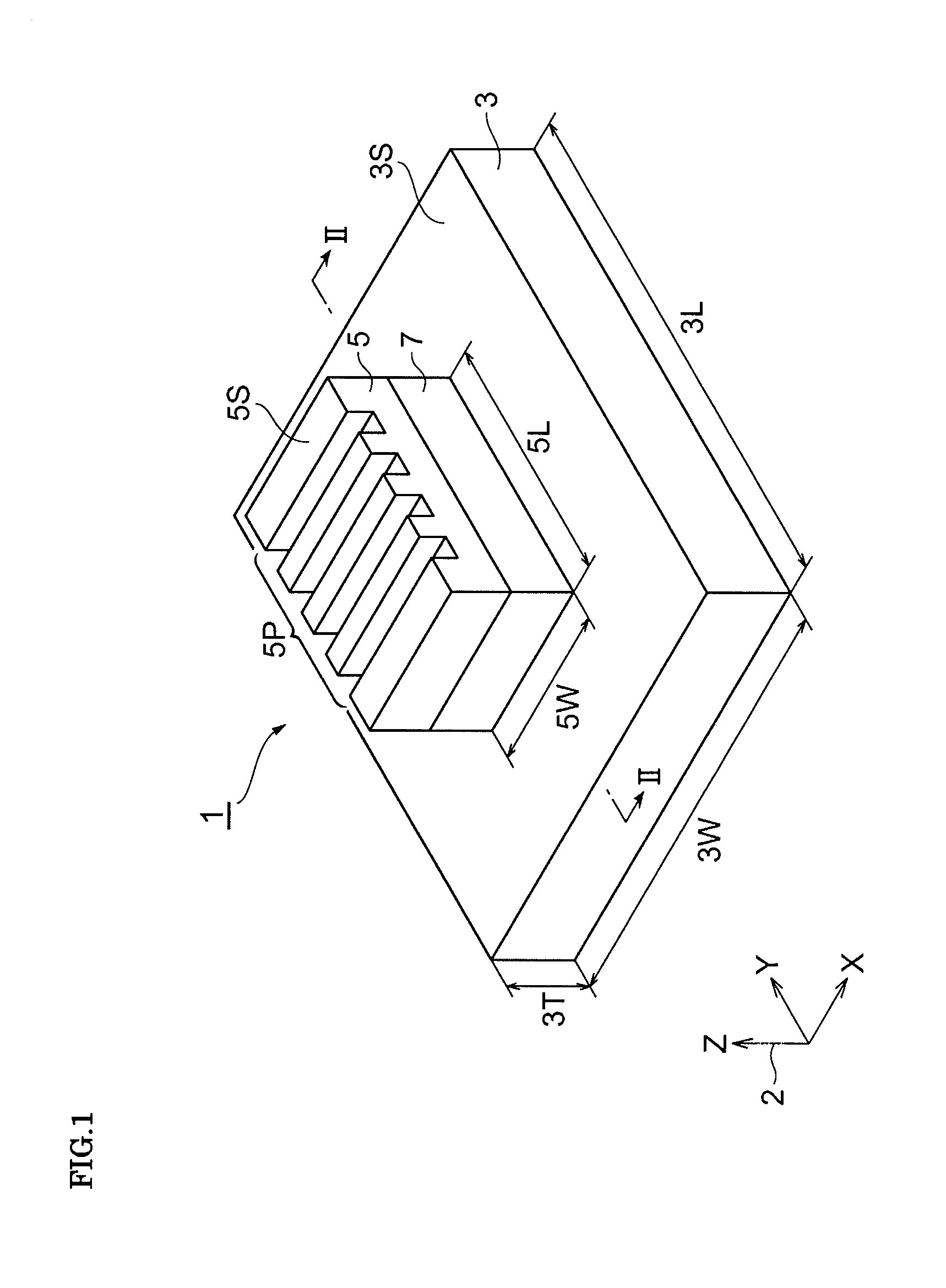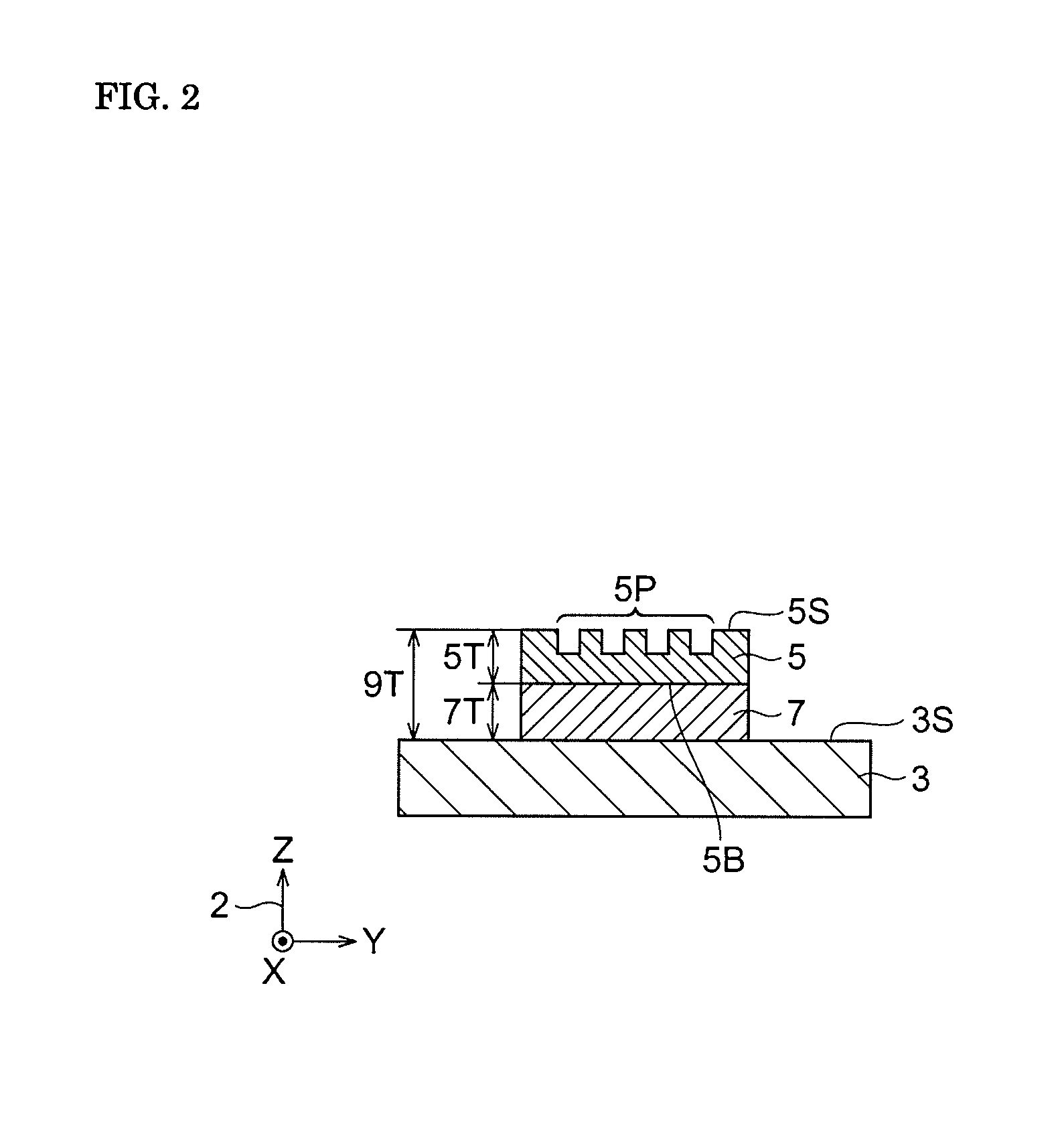Nano-imprint mold
a technology of nano-imprinting and molds, which is applied in the direction of dough shaping, manufacturing tools, applications, etc., can solve the problems of variation or degradation of the properties of the thickness of residual resin layers with the pattern of projections and recesses transferred thereto, so as to reduce the manufacturing cost of devices such as distributed feedback laser diodes
- Summary
- Abstract
- Description
- Claims
- Application Information
AI Technical Summary
Benefits of technology
Problems solved by technology
Method used
Image
Examples
first embodiment
[0039]FIG. 1 is a perspective view of a nano-imprint mold according to a first embodiment. FIG. 2 is a cross-sectional view of the nano-imprint mold taken along line II-II in FIG. 1.
[0040]As shown in FIGS. 1 and 2, a nano-imprint mold 1 according to this embodiment includes a mold base 3, a mold body 5, and an elastic body 7 disposed between the mold base 3 and the mold body 5. In FIGS. 1 and 2, an orthogonal coordinate system 2 is shown.
[0041]In this embodiment, the mold base 3 is a rectangular plate with its thickness direction extending along a Z axis, and has a surface 3S extending along an X-Y plane. The mold base 3 is composed of, for example, quartz, synthetic quartz, silicon, nickel, or the like. If ultraviolet curing resin is to be used as a nano-imprint resin portion to be described later, the mold base 3 is preferably composed of a material with sufficient ultraviolet transmissivity, such as quartz or synthetic quartz.
[0042]For example, the mold base 3 has, for example, t...
second embodiment
[0073]Next, a nano-imprint mold according to a second embodiment will be described. FIG. 12 is a perspective view of the nano-imprint mold according to this embodiment. FIG. 13 is a cross-sectional view of the nano-imprint mold taken along line XIII-XIII in FIG. 12.
[0074]A nano-imprint mold 1x according to this embodiment shown in FIGS. 12 and 13 differs from the mold 1 according to the first embodiment in additionally having a protrusion 23.
[0075]The mold 1x according to this embodiment includes the protrusion 23 provided on the surface 3S of the mold base 3. As viewed in the thickness direction of the mold base 3, the protrusion 23 in this embodiment is separated from the mold body 5 and the elastic body 7. Moreover, the protrusion 23 is provided along the outer edges of the mold base 3. The mold body 5 and the elastic body 7 are surrounded by the protrusion 23. The protrusion 23 is fixed to the mold base 3.
[0076]In this embodiment, the protrusion 23 is composed of the same materi...
PUM
| Property | Measurement | Unit |
|---|---|---|
| Thickness | aaaaa | aaaaa |
| Thickness | aaaaa | aaaaa |
| Bulk modulus | aaaaa | aaaaa |
Abstract
Description
Claims
Application Information
 Login to View More
Login to View More - R&D
- Intellectual Property
- Life Sciences
- Materials
- Tech Scout
- Unparalleled Data Quality
- Higher Quality Content
- 60% Fewer Hallucinations
Browse by: Latest US Patents, China's latest patents, Technical Efficacy Thesaurus, Application Domain, Technology Topic, Popular Technical Reports.
© 2025 PatSnap. All rights reserved.Legal|Privacy policy|Modern Slavery Act Transparency Statement|Sitemap|About US| Contact US: help@patsnap.com



